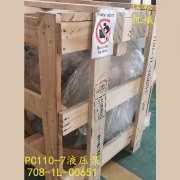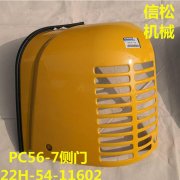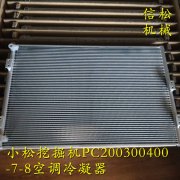Mob:13455586850
Tel:13475776188
Email:jnxinsong@163.com
Add:B4-108, meiheng Construction Machinery City, West Outer Ring Road, Rencheng District, Jining City, Shandong Province
The fault diagnosis methods of excavator hydraulic pump can be divided into instrument diagnosis method and manual diagnosis method. The instrument diagnosis method is physical test. Artificial diagnosis method uses vision, touch, smell and hearing to diagnose the technical status and fault of hydraulic pump. Jining Xinsong machinery introduces some commonly used instrument detection and diagnosis methods for rapid oil quality analysis. The basic principle of oil quality rapid analysis is to reflect the aging degree of oil in use by synthesizing the change of dielectric constant. The rapid oil quality analyzer not only provides a quick and simple oil quality detection method for the hydraulic system of construction machinery, but also can monitor the operation status of the equipment through the regular detection of the oil in use, so as to prevent the occurrence of accidents. The traditional regular oil change mode in equipment management is changed, and the scientific oil change according to quality is realized. This method can quickly detect the physical and chemical properties of the hydraulic oil on site, and judge whether the hydraulic pump fault is caused by the deterioration of the hydraulic oil. Hydraulic system tester. Since the pressure of the hydraulic pump of the excavator remains unchanged within the regulation range, the flow of the hydraulic pump can be measured by the hydraulic system tester to judge its working state. Hydrostatic testing machine is generally composed of pressure gauge, flowmeter, tachometer, etc. according to the connection mode of the testing machine in the pipeline, it can be divided into straight through test method and bypass test method. Install the tester on the high-pressure pipeline of the oil pump with the bypass method, make the oil pump run at the rated speed, and the hydraulic oil temperature is about 60 ℃. Observe and record the flow reading of the tester when it is no-load, and then load it with the loading valve, so that the load pressure gradually rises to the rated pressure of the system, observe and record the flow reading at this time. If the measured flow is 25% lower than the no-load flow, the hydraulic pump is faulty. If the flow reading decreases by 50%, it can be determined that the hydraulic system fault is caused by the hydraulic pump, and the excavator must be disassembled for maintenance. Noise meter. The normal noise limit of excavator hydraulic pump is 105dB. If the limit is exceeded, it may be that the motor and pump drive shaft are not concentric, or the air entering the inside or the hydraulic pump is worn too much. thermometer. The fault is diagnosed by testing the difference between the temperature of the hydraulic pump shell and the temperature of the hydraulic oil. If the pump shell temperature is higher than 5 ℃, the change of oil temperature may be that the mechanical efficiency of the hydraulic pump is too low and the mechanical wear is large. If the temperature difference exceeds 10 ℃ and the system pressure setting is normal, the oil quality is normal, it may be due to large axial clearance, serious wear of hydraulic pump, reduced volumetric efficiency and increased leakage. Pressure gauge. Because the excavator hydraulic pump adopts constant pressure control, the pressure of the excavator hydraulic pump system can not reflect the working state of the hydraulic pump, but the pump fault can be judged by the swing of the pressure gauge pointer. If the deflection of the pressure gauge pointer exceeds ± 200 kPa or very slow swing is an abnormal phenomenon....

With the development of China's industry, some construction sites use excavators. I believe we are not unfamiliar with excavators, because we can see excavators everywhere. Many parts of excavators are made of sheet metal structural parts of excavators, because sheet metal structural parts processing is relatively simple, which can meet the needs of our excavators. Now let's take a look at the processing steps of sheet metal structural parts. Let's take a look at how sheet metal structural parts of excavators are produced. One step is cutting. When we get the sheet metal, we have to cut it to the right size. We must be careful when we cut and try to fit. Then we have to do the cutting work. Cutting action is relatively large, so cutting must be very accurate, grasp the strength. Don't cut the whole surface after cutting too much. The sheet metal structure of excavator can't be used any more. After cutting, it can be observed whether it is suitable. If it doesn't fit, you should continue to cut. The other step is folding. A metal plate is a flat material. Sometimes we need to fold them into different shapes. We need more shapes. Sometimes we need more curve shapes. At this point, we need to fold them. We should be very careful when folding, because the metal plate is very sharp and may hurt our hands. Only in this way can the metal plate parts become what we need. After folding, you can finish the work and handle the corners, which will be more complete. The processing of sheet metal structure involves many technological processes. Next, Xinsong will introduce some process knowledge to you. Wire drawing: refers to the use of wire drawing machine and abrasive belt on the surface of a grain processing technology. Drilling: refers to the process of drilling a workpiece with a drill on a drilling or milling machine. Chamfering: it refers to the sharp angle of workpiece processed by mold, file, grinder, etc. Leveling: refers to the process of leveling the workpiece with other equipment before and after processing. Posterior teeth: it refers to the process of secondary thread restoration for the workpiece with teeth in advance. Sticking protective film: the process of protecting the surface of the workpiece with a film that can protect the surface of the workpiece. Tear protective film: refers to the cleaning process of the protective film on the surface of the workpiece. Shape correction: refers to the process of adjusting the processed workpiece. Welding method of sheet metal structure processing. Double sided single point welding. All universal welding machines adopt this scheme. It is suitable for small parts and large parts around the welding point. Single side single point welding. When the accessibility of the electrode on one side of the part is poor or the part is large and the secondary circuit is too long, this scheme can be adopted. When feeding from one side of the weldment, copper pad should be added on the other side to reduce the shunt and act as the fulcrum of the reaction force). Single side double spot welding. When feeding from one side, two points should be welded at the same time to improve productivity. The phenomenon of invalid shunt often occurs in single side feeding, which wastes electric energy. When the distance between points is too small, welding will not be possible. Knowledge of sheet metal structure maintenance. After the metal plate structure has been used for a period of time, it should be cleaned and overhauled once. When cleaning sheet metal structural parts, clean the interior with hot water and blow dry with compressed air to remove the gasoline vapor inside the sheet metal structural parts. If the outside of the sheet metal structure is rusty, clean with a wire brush and then paint. After the metal plate structure is cleaned, the tightness should be checked. During the inspection, all orifices of the sheet metal structure shall be plugged with rubber plugs, and then immersed in water to input compressed air from the oil pipe joint hole. If there's a bubble in one part, it's the leak. At this point, mark the leak and weld after the paint is removed. When repairing, different welding methods can be used according to the size and location of leakage. If the leakage is small, it can be repaired by soldering; If the leakage is too large, repair welding can be carried out; If there is a crack at the joint of the upper and lower half shell of the steam sheet metal structure, remove the sheet metal structure cover and the end cover of the oil meter sensor float group before welding, and fill the sheet metal structure with cold water....

We all use air conditioning, but it works because several parts of the air conditioning work together. Air conditioning condenser is a part of air conditioning and the heart of air conditioning refrigeration system. But to be honest, although we all have air conditioning, many people only know that air conditioning can help us cool down, but the role of some components in air conditioning is not so clear. Many people want to know what is the function of the air conditioner condenser? If you don't know, let's take a look at the introduction below. Air conditioning condenser function. The function of air-conditioning condenser is very important. As we all know, in the whole process of air-conditioning work, the compressor can compress and transport refrigerant vapor, so that the evaporator produces low pressure, and the condenser is high pressure, so in the refrigeration system, the air-conditioning condenser is the heart of the whole system; It can have a good condensation effect, it is worth mentioning that it is a choice. There are different types of air conditioning condensers. According to the different cooling media, air conditioning condensers can be divided into the following categories: water cooled type: the name of this kind of air conditioning condenser is because when the refrigerant releases heat, the heat is taken away by cold water. The cooling water can be used once or recycled. It depends on your choice. Air cooled: we often call this kind of air-conditioning condenser air-cooled, because this kind of air-conditioning condenser, the air takes away the heat released by the refrigerant. It is well known that air can convection naturally. Of course, you can also use a fan to force the air to flow. Generally speaking, if the water supply is inconvenient or difficult, this kind of air conditioning condenser is often used. Water air cooling type: the power of this kind of air conditioning condenser is relatively large, the heat of refrigerant can be taken away by water and air at the same time, but it mainly depends on cooling water. On the surface of the heat transfer tube, the cooling water will evaporate, while the air is mainly used to accelerate the evaporation of water, so that the steam can be carried away faster. Evaporative condensing type: the working principle of this kind of air conditioning condenser is more complex, mainly relying on another refrigeration system. When the refrigerant evaporates in another system, a cooling effect is produced, which cools the refrigerant vapor on the other side....

Copyright © 2021-2023 Jining Xinsong Construction Machinery Co., Ltd. all rights reserved Record No:鲁ICP备16023215号-1